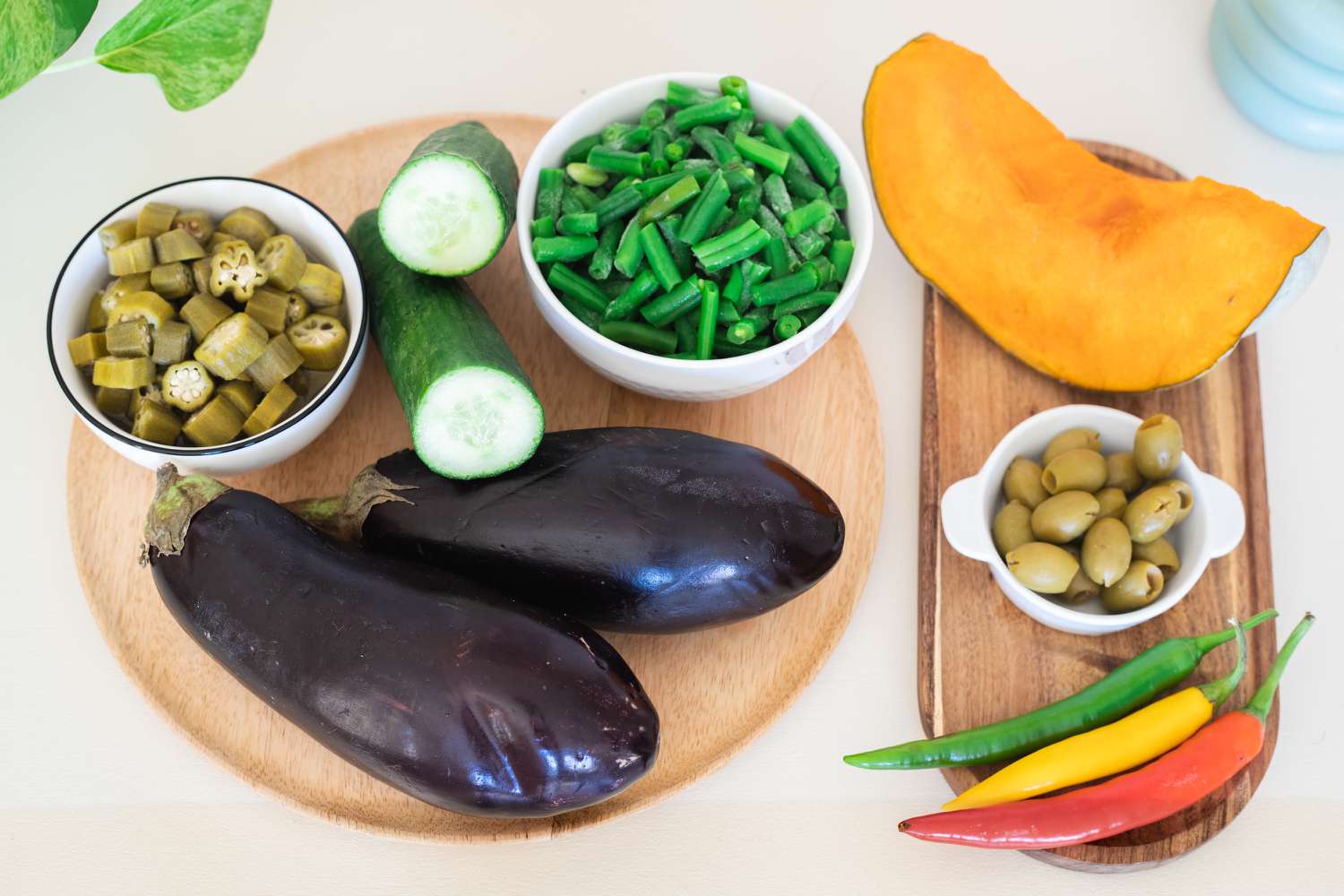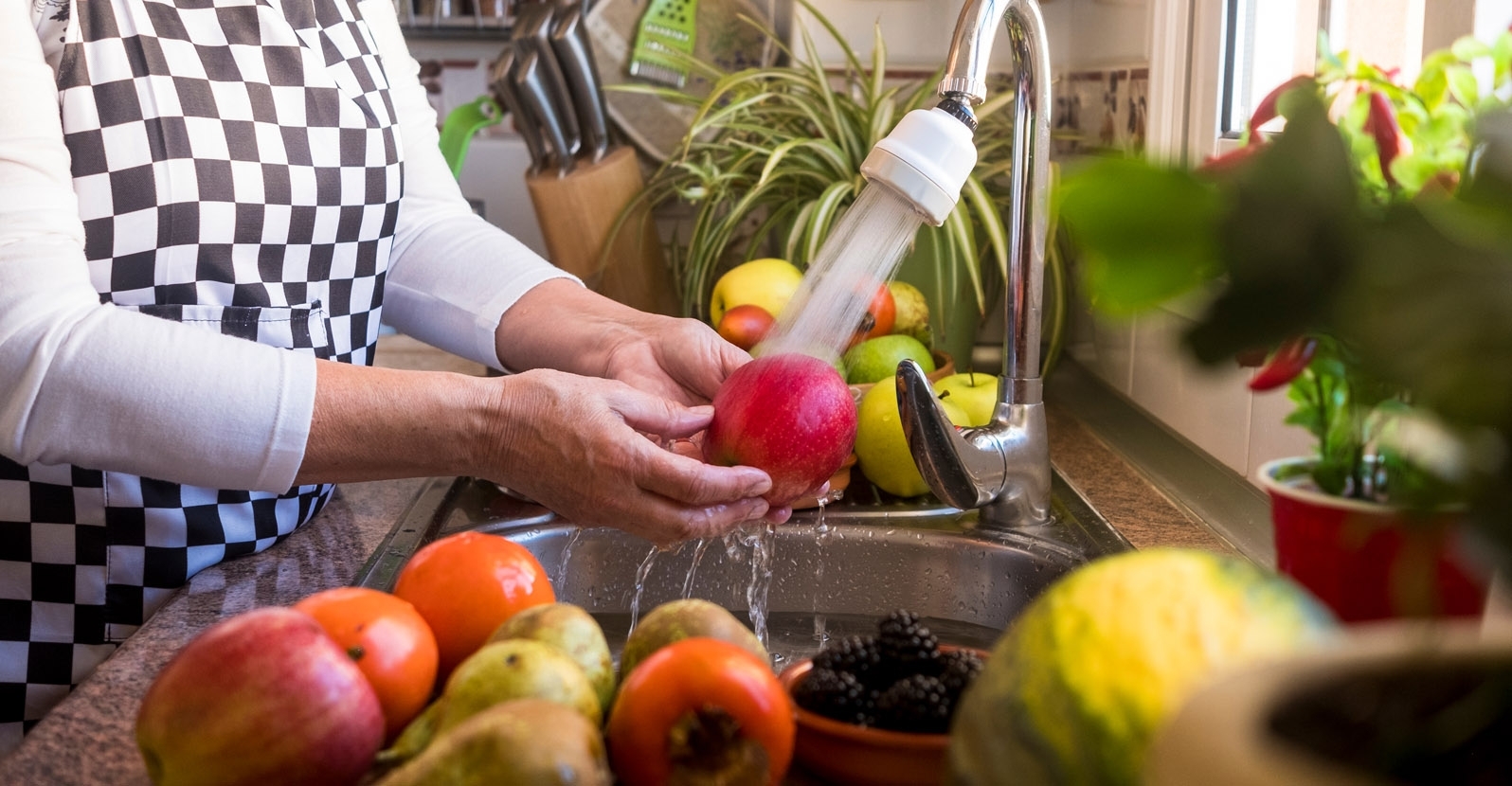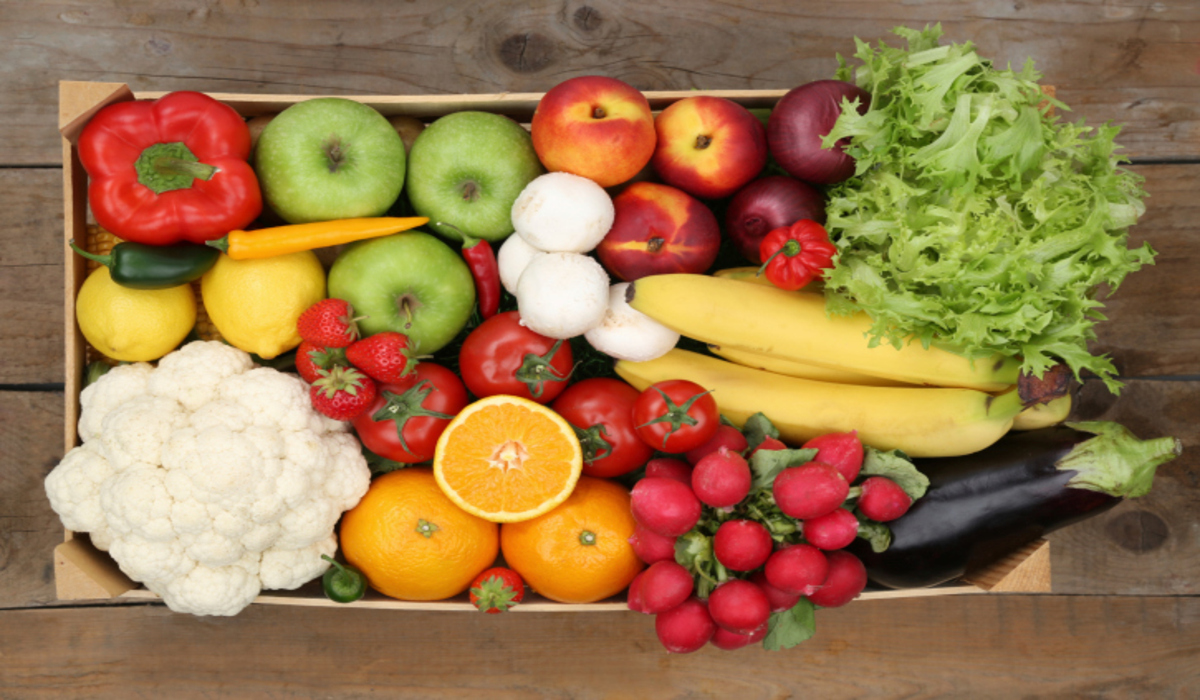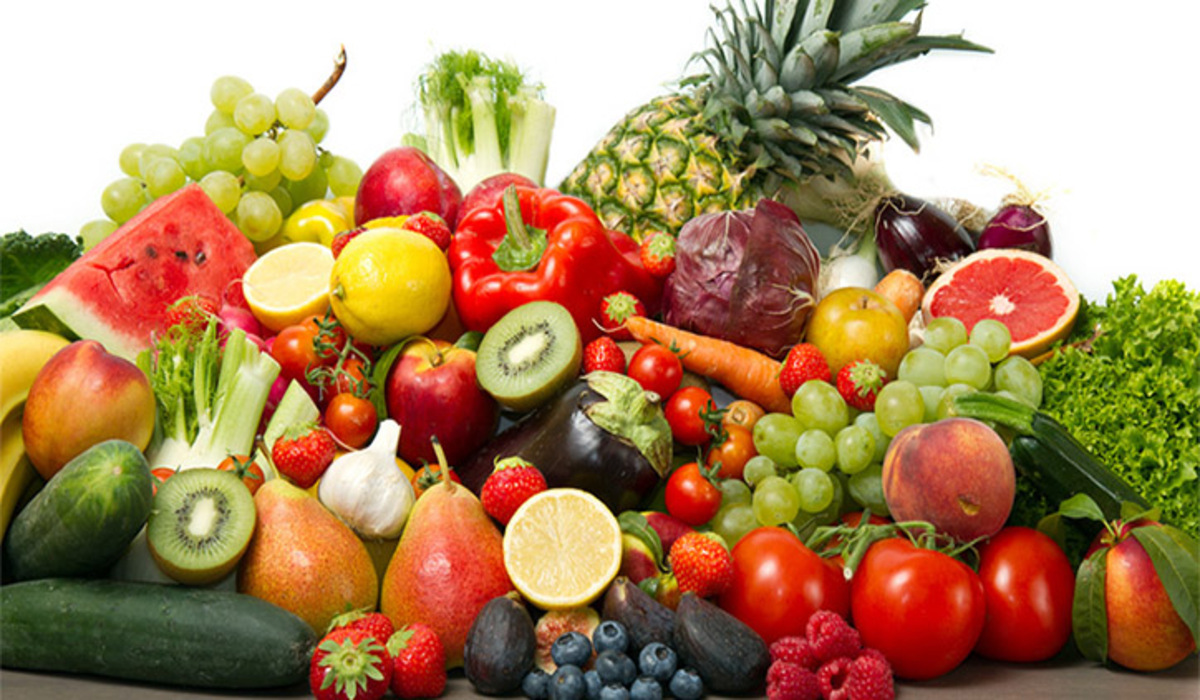Home>Gardening News and Trends>Latest News>What Vegetables Are Really Fruits


Latest News
What Vegetables Are Really Fruits
Modified: January 22, 2024
Stay updated with the latest news about vegetables and fruits. Discover the surprising truth behind which vegetables are actually classified as fruits.
(Many of the links in this article redirect to a specific reviewed product. Your purchase of these products through affiliate links helps to generate commission for Chicagolandgardening.com, at no extra cost. Learn more)
Table of Contents
Introduction
When it comes to distinguishing between fruits and vegetables, things are not always as straightforward as they seem. While we may have learned in school that fruits contain seeds and develop from the ovary of a flowering plant, and vegetables come from other parts of the plant, there can be some confusion in practice. Some vegetables are actually fruits, and some fruits are often labeled as vegetables due to culinary and cultural conventions. This fascinating overlap between fruits and vegetables often leads to debates and misconceptions among people.
In this article, we will delve into the world of fruits and vegetables and explore examples that challenge our preconceived notions. By examining various classifications and looking at specific examples, we will uncover the surprising truth about what vegetables are actually fruits.
Understanding the distinction between fruits and vegetables is not just about semantics; it also impacts our diet and how we perceive the nutritional value of different foods. Whether you are a food enthusiast, a health-conscious individual, or simply curious about the wonders of nature, this article will aim to shed light on the complex relationship between fruits and vegetables.
So, fasten your seatbelts, get ready to challenge your assumptions, and prepare to expand your knowledge of the fascinating world of fruits and vegetables!
Definition of Fruits and Vegetables
Before we dive into the complexities of fruits and vegetables, let’s establish a clear definition for both terms. In botanical terms, fruits are the mature ovaries of flowering plants that contain seeds. These ovaries develop from the fertilized and swollen base of the flower. Fruits are typically sweet-tasting and are designed to attract animals to aid in seed dispersal.
On the other hand, vegetables encompass a broader category of plant parts that are consumed as food. Unlike fruits, vegetables do not have a strict botanical definition but are generally considered to be any edible part of a plant that is not a fruit or seed. This can include roots, stems, leaves, flowers, and even some immature or unripe fruits.
It is important to note that the botanical definition of fruits may differ from how we commonly use the term in culinary contexts. In the kitchen, fruits are often associated with sweet, dessert-like flavors, whereas vegetables are usually associated with savory, non-sweet dishes.
Now that we have a basic understanding of the definitions, let’s explore the classification systems that further categorize fruits and vegetables.
Classification of Fruits and Vegetables
The classification of fruits and vegetables can vary depending on different factors, including botanical, culinary, and cultural perspectives. While there is no absolute consensus, let’s explore some common classification systems to better understand the diverse nature of these edible plant parts.
Botanical Classification: Botanists classify fruits based on their botanical characteristics. Fruits are categorized into three main groups: simple fruits, aggregate fruits, and multiple fruits. Simple fruits, such as apples and oranges, develop from a single ovary. Aggregate fruits, like raspberries and blackberries, form from multiple ovaries in a single flower. Multiple fruits, such as pineapples and figs, emerge from the fusion of several individual flowers.
Culinary Classification: From a culinary standpoint, fruits and vegetables are often classified based on their taste profiles and usage in various dishes. Fruits, as typically understood, are sweet or tart and are commonly used in desserts, juices, and snacks. Vegetables, on the other hand, are considered more savory and are frequently used in salads, soups, and main dishes.
Cultural Classification: Cultural practices can also influence the classification of fruits and vegetables. Some cultures consider certain plant parts as fruits, while others may perceive them as vegetables based on tradition and usage. For example, tomatoes are often used in savory dishes and are commonly thought of as vegetables in culinary contexts, despite being botanically classified as fruits.
These classification systems highlight the intricacies and subjective nature of categorizing fruits and vegetables. Consequently, this complexity can contribute to the confusion surrounding certain fruits that are often mistaken for vegetables and vice versa. Let’s explore some specific examples to better understand this phenomenon.
Examples of Fruits That Are Commonly Perceived as Vegetables
There are several fruits that are commonly misidentified as vegetables due to their culinary usage and flavor profiles. Let’s take a look at some examples:
- Tomatoes: Perhaps one of the most well-known examples, tomatoes are often mistaken for vegetables. Despite being a fruit botanically, tomatoes are used primarily in savory dishes, such as salads, sauces, and sandwiches. This confusion stems from a historical Supreme Court ruling in the late 19th century that classified tomatoes as vegetables for trade and taxation purposes.
- Cucumbers: Cucumbers are another misunderstood fruit that is often perceived as a vegetable. With their fresh and crisp texture, cucumbers are typically used in salads, pickles, and refreshing beverages. While they may lack the sweetness commonly associated with fruits, cucumbers are technically classified as fruits because they develop from the ovary of a flowering plant and contain seeds.
- Avocados: Avocados are often mistaken for vegetables due to their mild flavor and inclusion in savory dishes. However, avocados are fruit in the truest sense. They are packed with healthy fats and nutrients and are commonly enjoyed in salads, guacamole, and as a topping for toast or burgers.
- Eggplants: With their rich and hearty flavor, eggplants are commonly used in a variety of savory dishes, such as stews, stir-fries, and grilled dishes. Although they are often considered vegetables, eggplants are botanically classified as fruits. They originate from the flowering plant family Solanaceae and contain numerous small seeds.
- Bell Peppers: Bell peppers, available in a range of vibrant colors, are often mistaken for vegetables. These crunchy and sweet fruits are commonly used in salads, stir-fries, and stuffed dishes. Despite lacking the traditional sweetness associated with fruits, bell peppers are a great source of vitamins and are technically classified as fruits because they develop from the ovary of a flower.
These examples highlight how culinary usage and cultural perceptions can lead to fruits being commonly perceived as vegetables. Understanding the botanical truth behind these fruits can help us appreciate their unique qualities and nutritional value.
Examples of Vegetables That Are Actually Fruits
On the flip side, there are several vegetables that are actually botanically classified as fruits. Let’s explore some examples:
- Squash: Squash varieties, such as zucchini, butternut squash, and acorn squash, are considered vegetables in culinary contexts. However, they are technically fruits. These fleshy, edible fruits develop from the ovary of a flower and contain seeds. Whether roasted, sautéed, or used in soups and stews, squash adds a distinctive flavor and texture to various dishes.
- Capsicums: Capsicums, also known as peppers, including the sweet bell peppers and spicy chili peppers, are commonly used in savory dishes around the world. These vibrant and flavorful vegetables, often used for their aromatic qualities, are actually fruits. As with other fruits, capsicums develop from the flowering plant’s ovary and contain seeds.
- Okra: Known for its slimy texture when cooked, okra is regarded as a vegetable in most culinary preparations. However, it is botanically classified as a fruit. These elongated pods develop from the flowering plant’s ovaries and contain seeds. Okra is commonly used in stews, curries, and soups, lending its unique flavor and thickening properties.
- Corn: Corn is a staple food in many cultures, consumed in various forms such as on the cob, popped kernels, or ground as cornmeal. While corn is typically considered a vegetable, each kernel is a fruit. These kernels develop from the pollinated flowers, serving as the plant’s seeds and yielding a starchy and sweet flavor when consumed.
- Peas: Peas are another example of vegetables that are technically fruits in botanical terms. The sweet and vibrant green peas we enjoy in stir-fries, salads, and stews are the seeds contained within the fruiting pods. Interestingly, snow peas and sugar snap peas are also considered fruits as they are consumed along with the pods.
These examples remind us that our culinary classifications don’t always align with the botanical reality. The varied forms and flavors of these fruits-disguised-as-vegetables offer exciting culinary possibilities and contribute to the diversity of our diets.
Nutritional Differences Between Fruits and Vegetables
While both fruits and vegetables provide essential vitamins, minerals, and fiber, there are some notable nutritional differences between the two categories.
Vitamin Content: Fruits tend to be higher in certain vitamins, particularly vitamin C. Citrus fruits like oranges and strawberries are well-known for their vitamin C content. Fruits also tend to be a good source of vitamin A, especially those with vibrant colors like mangoes and cantaloupes. On the other hand, vegetables like spinach and kale are rich in vitamin K and other B vitamins.
Mineral Content: When it comes to minerals, both fruits and vegetables contribute to our daily needs. Bananas and avocados, for example, are known for their potassium content. Vegetables like broccoli and Brussels sprouts are good sources of calcium and iron. Leafy greens such as spinach and kale are particularly rich in magnesium and folate.
Fiber Content: Fiber is critical for maintaining a healthy digestive system. While both fruits and vegetables contain fiber, vegetables tend to be higher in fiber content overall. Leafy greens, cruciferous vegetables like cauliflower and broccoli, and root vegetables like carrots and sweet potatoes are excellent sources of dietary fiber.
Antioxidants: Fruits and vegetables are also rich in antioxidants, which help protect the body against harmful free radicals. Different fruits and vegetables contain varying types and amounts of antioxidants. Berries, such as blueberries and raspberries, are particularly high in antioxidants. Certain vegetables like tomatoes and bell peppers also have antioxidant properties.
It’s important to note that these nutritional differences can vary depending on the specific fruit or vegetable in question. Within each category, the nutritional profile can vary significantly. Additionally, the way in which fruits and vegetables are prepared and cooked can also affect their nutrient content.
By incorporating a variety of both fruits and vegetables into our diets, we can ensure a well-rounded intake of essential nutrients. The diverse range of colors, flavors, and textures in fruits and vegetables allows us to enjoy a nutritious and balanced diet.
Conclusion
The world of fruits and vegetables is filled with fascinating complexities and misconceptions. While the botanical definitions provide clarity, the culinary and cultural contexts often blur the lines between these categories. We have explored how certain fruits are commonly perceived as vegetables due to their usage and flavor profiles, such as tomatoes, cucumbers, and avocados. Conversely, we have uncovered vegetables that are botanically classified as fruits, such as squash, capsicums, and corn.
Understanding the differences between fruits and vegetables goes beyond semantics. It also affects our perception of flavors and the nutritional value of the foods we consume. Whether sweet or savory, both fruits and vegetables offer vital nutrients, vitamins, minerals, and dietary fiber. Their diverse profiles contribute to a balanced diet and support overall well-being.
The next time you find yourself engaged in a debate about whether tomatoes are fruits or vegetables, remember that it’s not a simple black-and-white answer. Rather, it’s a fascinating exploration into the complexities and nuances of the natural world and human understanding.
So, embrace the richness and diversity of fruits and vegetables. Experiment with new flavors, try different culinary preparations, and expand your horizons. Whether you’re savoring a juicy tomato in your salad or relishing a slice of avocado on your toast, remember to appreciate the wonders of nature and the bountiful offerings of fruits and vegetables.










